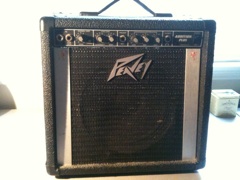Over the past few days the primary question, creatively, that has haunted me is “what’s the way forward?” Part of me wants to say “the question for this generation of artists is…” but in truth, I don’t really care about the generation. They’re not in my head. I am. So my question is: what is truly new?
The leap that music made when electronics and computers created all of the new timbres and possibilities in the early 20th century seems all but spent now. It’s no longer enough to come up with a beautiful tone or a perfect simulation. It’s expected. The context of the tone is the thing. It always has been, but for a long time a composer could get away with quite a bit as long as the sounds were interesting or created via a new method. In some cases the same old sounds made a new way was enough to attract attention.
Please note: There are no deep insights here.
Years ago, when I was stuck and looking for a guidepost, I would go to the EMF’s web site and look up a new CD by a composer I’d never heard of before. That’s how I found Hildegard Westerkamp and her wonderful soundscapes. My Larry Austin collection started there as well. Today it feels like there’s less that I haven’t heard and I wonder if my listening is simply not deep enough for the music being produced today (do I get it?). Or perhaps it’s that the magnitude of available music is so great that there isn’t time to spend on deep listening. And with so much available, there’s no reason to work at a piece that doesn’t instantly connect. If the web in 1996 looked the way it does today I wonder if I would have had the guts to spend time with the work of Austin or Westerkamp. I might not have taken the time because there would always have been something else that fit my existing palette right at my fingertips.
This speaks volumes about how I feel about my music today. If it doesn’t connect with the listener the first time, what chance do I have? With the constant communication and connection brought to us today, it’s hard to imagine not trying to please the audience. The days of “who cares if they listen” (google it for a giggle) are long gone and the time of the retweet and page rank is here. What is a composer to do?
Well, I dig deeper. I listen to the things that inspire me. I follow twisting paths of references from recording to recording and trace the life of different composers hoping to pick up the scent of something that I missed. I really do wonder if I’m not part of a lost generation of composers. Creative minds lost to the media that surround them and unable to create a new message because the methods are all so novel that they beg investigation.
What a wonderful problem to have, on the surface. And if the problem were only on the surface, I’d be fine.
